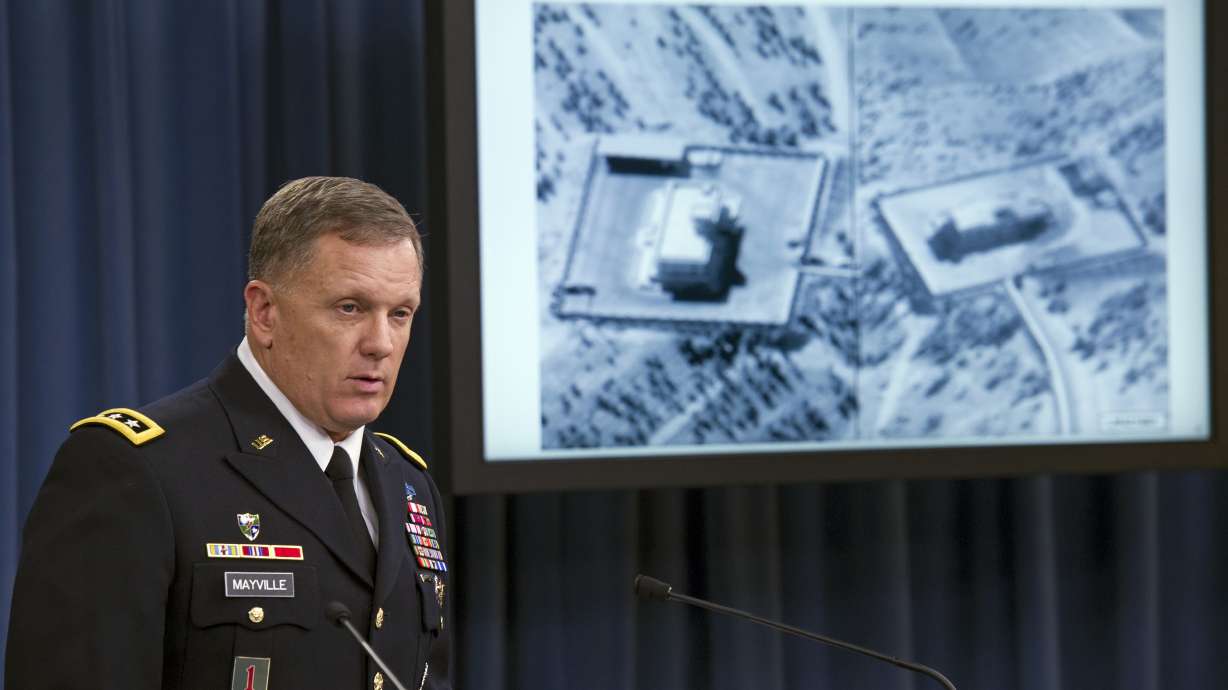Estimated read time: 3-4 minutes
This archived news story is available only for your personal, non-commercial use. Information in the story may be outdated or superseded by additional information. Reading or replaying the story in its archived form does not constitute a republication of the story.
WASHINGTON (AP) — Smart people in the administration have spent the last two days telling the American people that U.S. strikes against the Khorasan Group were necessary to disrupt "imminent attack plotting" against U.S. and Western interests.
They warned that members of the shadowy Khorasan Group, an al-Qaida offshoot, were "nearing the execution phase" of an attack in the U.S. or Europe.
They spoke of "active plotting that posed an imminent threat."
People may have come away with the impression that the terror group was on the brink of pulling off something awful.
Perhaps not.
In government-speak, "imminent attack plotting" doesn't necessarily mean an attack is imminent.
Careful parsing of the language reveals a distinction between imminent plotting and an imminent attack.
Likewise, an imminent threat doesn't necessarily mean an imminent attack.
And, in the view of the government, there's more than one meaning for imminent, it turns out.
Dictionary.com defines imminent as "likely to occur at any moment."
But a Justice Department white paper released in February 2013 gives a more nuanced view.
"An 'imminent' threat of violent attack against the United States does not require the United States to have clear evidence that a specific attack on U.S. persons and interests will take place in the immediate future," the memo reads.
That's because U.S. officials say they can't wait until preparations for a terrorist act are completed before they take action to defend U.S. interests.
So their idea of taking action against an "imminent threat" involves a more elastic time frame.
In the case of the Khorasan Group, two U.S. officials told the AP that U.S. officials aren't aware of the terrorists identifying any particular location or target for an attack in the near future. But intelligence officials have known for months that Khorasan group extremists were scheming with bomb-makers from al-Qaida's Yemen affiliate to find new ways to get explosives onto planes, the officials said.
The plans were far enough along that the Transportation Security Administration over the summer banned uncharged mobile phones and laptops from flights to the U.S. that originate in Europe and the Middle East.
Despite persistent questioning after the airstrikes, U.S. officials have not explained whether something changed in recent weeks to compel them to launch cruise missiles.
Secretary of State John Kerry said Wednesday on CNN that, although the U.S. had been tracking the group's plots for some time, "the moment actually was ripe," for military strikes.
Sen. Carl Levin, D-Mich., chairman of the Senate Armed Services Committee, described the imminent threat of the al Qaida-linked Khorasan group this way Wednesday at a defense writer's breakfast:
"The briefings we had indicated that there was a growing ability, near ability to put together an explosive device which could get through the security at airports and that's all I can tell you. And they were at a point, at a critical point in being able to develop that capability."
Two American officials, speaking on condition of anonymity because they were not authorized to discuss internal decision-making, told the AP that the government was concerned that the group could go underground after the AP reported that it was a top U.S. concern.
A bulletin from the FBI and the Department of Homeland Security issued Tuesday said U.S. officials had "no indicators of advanced al-Qaida or ISIL plotting in the homeland." But that memo, which used ISIL as an acronym for the militant Islamic State group, doesn't rule out terror plotting afoot elsewhere that could be focused on U.S. targets.
___
AP Intelligence Writer Ken Dilanian and AP writer Donna Cassata contributed to this report.
___
Follow Nancy Benac on Twitter at http://twitter.com/nbenac
Copyright © The Associated Press. All rights reserved. This material may not be published, broadcast, rewritten or redistributed.









